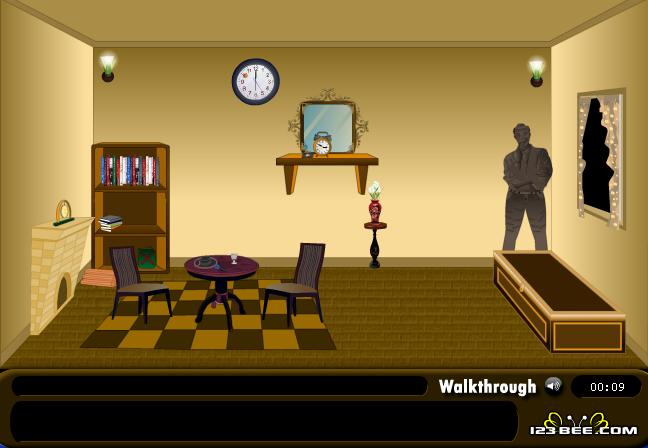This is my first blog, yay! I'm learning how to be in the professional world and I would like to be able to share what I learn and accomplish with the rest of the world. I hope with feedback and learning about everyone else I can gain a better sense of self as well as become a better student and teacher for the future. Thanks for listening!
Tuesday, October 7, 2014
Using the Game Escape the Room in a Classroom Setting
In this phase in my online class, we are learning about gamification. My previous post expanded on the notion of what gamification is and how it can be used in the class. I came across an article in our syllabus that talked about the nature of Escape the Room games and how they can be beneficial for ESOL students. If you aren't sure what Escape the Room games are, here's a basic description according to the article Focus on Genre: Escape the Room Games, "A point-and-click adventure game where players have to escape from imprisonment by exploiting their surroundings..." Players are asked to click on anything in their surroundings and gradually piece things together to be able to escape the situation in which they have been places. One particular escape game I found to be thrilling is the Phantasy Quest game. This is an escape game that depicts you being stuck on an island and having to use the tools and objects around you to be able to make it through safely. Although I've played many Escape the Room games before, I've only played this particular one 3 times. The first time, I tried to see as far as I could get without a walkthrough. The next two times I completed it with a walkthrough to make sure that the directions that they gave me allowed me to win the game. The first time took quite some time and required a lot of repetition and trying new things. I really liked this game. It has you hooked from the moment you start playing. This creates great possibilities for using this with students. The last couple times I played was using the Phantasy Quest Walkthrough. I did this to be able to create a working game for a potential future classroom. I never realized the potential of using one of these games in my class until I pondered about the walkthrough. To understand a walkthrough, you need to know directions, verbs, and so much vocabulary. If provided computers in school, this would be a great activity to help students listen to explicit directions. According to the NYS ESOL Standards, Standard 1 can be directly focused on by using one of these games in class. Standard one says that students will use language for information and understanding. This game is PERFECT for working on that task. While playing this game in an ideal classroom, each student would have a computer. You may have to get creative if there isn't one available to each students but if so this is how I see this game being used for an activity. First I would explain to the students what the Escape the Room games are about and how to navigate through the pages. After gaining the general idea I would let them play around on the site to be able to practice picking things up and making sure that their technical use of the computers is going okay. I would then have them restart the game to start at the beginning. My role as the teacher would be to be the reader of the walkthrough. I would hold the walkthrough and read the steps out loud to the students. From hearing my specific instructions, the students should be able to navigate through the specific task that I am asking for instance, turn left and pick up the bottle. After I've given students time to complete the task, I would walk through and make sure that the task is complete, checking for comprehension. If I see that a student needs help or hasn't completed the task I might repeat the directions again. If they still aren't understanding I would have brought in picture references so that I could show them what to do. Some of the vocabulary might be a little tricky. Some might struggle through one step while others breeze through it and vice versa. I don't expect every student to get every step right but as long as the majority they do I'll be happy. This is a great listening task and checks for understanding and comprehension. Students would be engaged playing a game but as the same time learning new vocabulary and learning how to follow directions. By checking the students after each step, I would be making sure that they are active in the learning process and making sure they are on task and understanding. From this, I could figure out which students are struggling from what and pinpoint helping points for future lessons. I would encourage all teachers to try out this activity in the class, students would love it, I know I did!
Subscribe to:
Post Comments (Atom)

That sounds like a great "game plan."
ReplyDelete